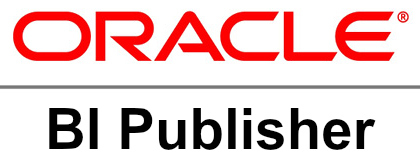Since Reports will not be part of future Forms releases, customers are left with the question of what to do. Oracle intends to push Forms customers towards the use of BI Publisher, which is Oracle’s preferred replacement for Reports. Therefore Forms 12c has been delivered with an much easier integration of the BI Publisher Reporting solution.
But are there any other alternatives out for Oracle Forms customers? In this blog, as part of our Oracle Reports series, we give an overview of the some of the most popular solutions when it comes to Oracle Reports alternatives.
The Last Reports Release
As early as October 2016, Oracle announced that Oracle Fusion Middleware 12.2.1.3.0 was the last report release. In addition, they revealed that Oracle Reports support would fully retire in 2023. Enterprise applications based on the Oracle Fusion middleware stack, which includes Oracle Forms and Reports, are therefore faced with a big problem. They need to immediately plan their new reporting strategy. But what Reports alternatives are currently on the market and what are their benefits?
JasperReports
Why should you consider Jasper Reports as a serious Oracle Reports alternative?
Well there are quite a few good reasons, but the main one: JasperReports is open source – well at least to a certain degree. JasperReports is developed and maintained by Jaspersoft. You can create your JasperReports using the main library and distribute them as long as you don’t change the source code. If you need further support from JasperSoft or different licensing, then you have to buy additional products.
The second main reason for Jasper is, that it is written in Java, which is widely used. JasperReports can handle various data source options: JDBC, Hibernate, XML, EJB, POJO. While there are many data sources possible, there are loads of export formats available: PDF, HTML, XLS, RTF, ODT, XML, CSV, TXT, DOCX.
JasperReports from TIBCO is probably the Java based open source solution with the widest community. Similar to BIRT, reports development takes place in the Eclipse IDE and at runtime, the engine can be integrated into any Java application. In contrast to BIRT, Jasper can also be consumed via a scheduler or web services. That Oracle Forms integration very flexible and diverse.
Strengths
Broad coverage of various data sources
Pixel-perfect issues possible
Very performant for long reports
Weaknesses
No direct printing – only possible with additional implementation
Cumbersome subreports for multiple data sources in a report
Few out-of-the-box aggregate features
Commitment, Problems, and Solutions
The possibility of integrating JasperReports via WebServices and URL calls also makes the tool interesting outside of pure Java application development. Pixel-perfect printing also allows safe use for classic tasks such as labels, barcodes and forms. If it is the first step in the Java world, the learning curve should not be underestimated like in BIRT.
While using Jasper Reports has some benefits it comes with some negative aspects and problems when you are moving from Oracle Reports. The biggest problem for most Oracle Reports developers will be the fact, that Jasper is not supporting PL/SQL. So if there is a lot of logic or validation in your reports we recommend to move the PL/SQL Code to the database and refactor the validation within Java.
Another problem could be, that you need Java knowledge to utilize JasperReports: If you already have Java knowledge in your company your Java developers will find it easier to work with JasperReports, but if your developers are pure PL/SQL developers Java training to a certain extend is not a bad idea. Also Java resources are quite common (Java is still the most famous programming language).
| No PL/SQL support | move PL/SQL to DB/Java |
| No validation triggers | refactor logic with Java |
| Generally limited triggers | refactoring, sub-reports |
| No detailed filtering of query groups | refactoring |
| No PL/SQL formula columns | refactoring |
| Too many sub-reports can result in very poor performance because each sub-report opens its own database connection, thread and query | perfomance test + refactoring, if necessary |
Oracle BI Publisher
Oracle’s official successor and recommendation for reporting is the Oracle BI Publisher. If asked, then Oracle would say there is only one real Oracle Reports alternative: Oracle BI Publisher. But BI Publisher (in the past XMLPublisher) is not a one-to-one replacement for Reports; it’s rather another option for reporting that is quite different from Reports.
BI Publisher divides the reporting into data, layout and language.
This changes the flow of work when it comes to the creation of a report. The advantage is, that reports that use the same data source but have a different layout must not be created multiple times. For creating these different layout-templates the development environment or a Microsoft Word Add-in can be utilized. An additional advantage of BI Publisher compared to Reports is that BI Publisher supports many sources and export formats.
One is not limited to an Oracle Database as a source of data – you can use different other sources like WebServices, files or external systems. Those can be exported to a wide range of formats like: PDF, PPT, SML, Excel to different output channels (printer, filesystem, mail etc.). BI Publisher additionally offers a dashboard functionality with which users can create their own reports. All of those mentioned possibilities make BI Publisher to a not to cheap Enterprise Reporting solution.
If you have licensed the iAS-EE the use of BI Publisher is free of an extra charge.He also supplanted Oracle Reports in Oracle’s own ERP suite. The strict separation between layout and data collection goes two steps further and makes it possible for the end user to create, manage and consume their own reports very intuitively via an online-builder and also to make this separation with standard XML technologies an efficient one Multilingualism of the reports. The BI Publisher is available through the metrics Named-User-Plus (395 €) or Processor (39,500 €).
Strengths
High degree of modularization (sub-templates, reuse)
Self-service portal for central reporting solution
Bursting and online dashboard
May be covered by Oracle Forms license
Weaknesses
Pixel perfect printing only cumbersome
Commitment
If the Forms and Reports application is licensed on the basis of an Oracle Application Enterprise Edition, the BI Publisher is the natural successor. The integration with Forms is predefined by Oracle and the integration into other applications based on APEX, ADF or other Java frameworks is very easy. The range of functions certainly surpasses all other alternative solutions.
Eclipse BIRT
BIRT is an open source solution from the Eclipse Foundation for the preparation, visualization and reporting of data within rich client or web applications based on Java. Report design and implementation takes place within the Eclipse IDE and a BIRT Report Designer. Then, applications integrate via the Report Engine, which can be integrated into any Java application with a Java API.
Strengths
Broad coverage of various data sources
Great variety of different output formats
Powerful charting engine
Weaknesses
Graphic elements are missing
Page-related values (subtotals, page numbers) are only cumbersome
Complex data types can not be covered
Commitment
In a holistic Java-oriented application development, BIRT certainly finds its rightful place. The existing BIRT Report Viewer can be used as an independent application and enriches the functionality of your application out of the box.
APEX Office Print
In the field of application development with Oracle APEX, the Belgian company APEX R & D has developed the product APEX Office Print (AOP). Data from the Oracle database or usable web services are linked to Office templates (Word, Excel, Powerpoint) and can be output in PDF or Office formats. Additional functionalities include integrated mailing functionality, various barcodes and the ability to generate interactive reports. The licensing model distinguishes between the cloud solution on a rental basis and the on-prem installation.
Strengths
Flexible through various APIs
Simple template creation via Office Tools
Easy to integrate in the apex environment
Weaknesses
Complicated creation of pixel-perfect printing
Requires Apex version 4.2 or higher in the database
Business logic from PL / SQL is difficult to adopt
Commitment
If your Forms applications future plans are to migrate to APEX, the APEX Office Print reports are almost perfect. The lightweight installation (based on APEX) offers a clear added value with interactive reports.
PL/ PDF
PL / PDF is a reporting tool of the Hungarian Oracle partner OraNext, which can only create documents as PDF, DOCX or XLSX with PL / SQL resources in the Oracle database. As a layout designer, a Word or Excel template can be used. The licensing allows a model by output format or per server.
Strengths
Performant for large data retrieval – runs directly in the database
Based solely on PL / SQL
Small footprint, can be easily integrated into the application
Weaknesses
Does not support other output formats
Linked to a database and thus not usable as enterprise service for other applications
Limited functionality (no BI, no self-service, no multilanguage support out of the box, etc.)
Commitment
PL / PDF is ideal if a manageable number of well-defined reports has to be created in the tightly-knit environment of the application. The integration is easy and easy to use for PL / SQL savvy developers.
Which target technology do other report users choose?
The answer to the question of where most of the market will go is usually its reasons. That’s why in our September 2016 webinar “The End of Oracle Reports” we asked more than 100 attendees about the technology they plan to use to replace Oracle Reports.
Remarkably, as many as 79% of participants were still unsure or undecided about the technology choice. Due to the importance of the decision, however, it is understandable and sensible on the other side that a final decision is not “broken over the knee”.
Among those who made their decision, Jasper Reports is the clear favorite, followed by Oracle BI Publisher and PL / PDF. However, few webinar participants considered BIRT, APEX Office Print, or a completely different tool for the best possible solution, but this does not have to be an exclusion criterion. As mentioned earlier, almost every technology has its raison d’être, if it suits the individual needs of the company.

Migration Issues
After deciding on a solution, you should also consider how a migration from Oracle Reports to the target technology will look. What all of these Oracle Reports alternatives have in common is the fact that there are different ways to approach the migration process.
Data model: In general, migrating your reports does not change the underlying data model. Often, however, migration is taken as an opportunity to clean up technical debt and reporting processes. Consolidate double queries, validate calculations, and add a future-proof report layer, which also provides valuable data for other BI solutions.
Layout: Reports has created a definition that can not be arbitrarily transferred to other tools with its design of the layout via coordinates of the elements and repeating frames (which can also be nested arbitrarily). A rough approach succeeds in every migration, but the biggest effort is surely to get everything back to its right place. Especially the tools that do not support natively pixel perfect printing prove to be a bigger hurdle.
Conclusion
Oracle Forms customers are currently under some pressure regarding the use of Oracle Reports. Since the last Forms Release 12.2.1.3.0, it has been confirmed that Oracle Reports will no longer be supported by 2023 at the latest. This creates the need to look for a suitable alternative in the market. In this paper, you were presented with five different solution alternatives, each with its own advantages and disadvantages. The decision depends on many factors within your application as well as the environment within which this application is developed, maintained and used. We will gladly show you which alternative is best for you in a more detailed analysis.
Meet our team to see how we can transform the systems that matter most to your business.






